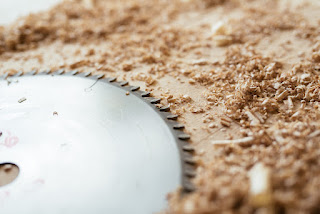Exploring the Exquisite World of Polish Wood Planks
Polish wood planks have earned a well-deserved reputation for their exceptional quality and timeless charm. Renowned for their durability, rich color variations, and remarkable craftsmanship, these planks have become a preferred choice for architects, interior designers, and homeowners seeking to enhance the aesthetic appeal of their spaces. In this article, we will delve into the fascinating world of Polish wood planks, examining their unique characteristics, manufacturing process, and the reasons behind their popularity.
The Beauty of Polish Wood Planks
Polish wood planks showcase the beauty of natural wood with
its characteristic grain patterns and color variations. Popular wood species
used in crafting these planks include oak, beech, pine, and ash, each
contributing its unique character to the finished product. The warm tones and
natural textures of these planks impart a sense of authenticity and coziness to
any interior.
Manufacturing Process
Polish wood planks are produced with meticulous attention to
detail, ensuring the highest quality standards. The process typically begins
with responsibly sourced logs that are cut into boards and dried to reduce
moisture content. This step is crucial in preventing warping and enhancing the
stability of the planks.
After the drying process, the planks are milled to precise
dimensions, ensuring uniformity and a seamless fit during installation. Skilled
craftsmen then carefully inspect the planks, selecting only those that meet
strict quality criteria for the subsequent steps.
Surface Finishing and Treatments
One of the factors that set Polish wood planks apart is the
focus on surface finishing and treatments. These planks are available in
various finishes, such as oiled, lacquered, or unfinished, catering to
different preferences and applications.
Oiled finishes bring out the natural beauty of the wood
while providing a protective layer that enhances its longevity. Lacquered
finishes, on the other hand, offer increased resistance to wear and tear,
making them ideal for high-traffic areas. For those who prefer to add a
personal touch, unfinished planks allow for custom staining and finishing to
suit individual preferences.
Applications and Versatility
Polish wood planks find application in a wide range of
spaces, including residential and commercial areas. From rustic country homes
to contemporary urban apartments, these planks effortlessly adapt to various
interior design styles.
Flooring is one of the primary uses of Polish wood planks.
The warmth and character they bring to a room make them a popular choice for
living areas, bedrooms, and even kitchens. Additionally, wood planks can also
be used for wall cladding, adding texture and visual interest to interior
spaces.
Eco-Friendly and Sustainable
Polish wood planks are often sourced from sustainable
forests and managed through responsible logging practices. This ensures that
for every tree cut down, another is replanted, promoting the long-term health
of the forest ecosystem. Furthermore, the manufacturing process involves
minimal waste, and any by-products are often recycled or repurposed.
Polish wood planks offer a captivating blend of beauty,
durability, and sustainability, making them a standout choice in the world of
interior design and architecture. With a commitment to quality craftsmanship
and environmentally conscious practices, these planks continue to captivate
homeowners and designers alike. Whether you seek to create a cozy ambiance or
elevate the elegance of your space, Polish wood planks are sure to add a touch
of natural splendor to any room.




Komentarze
Prześlij komentarz